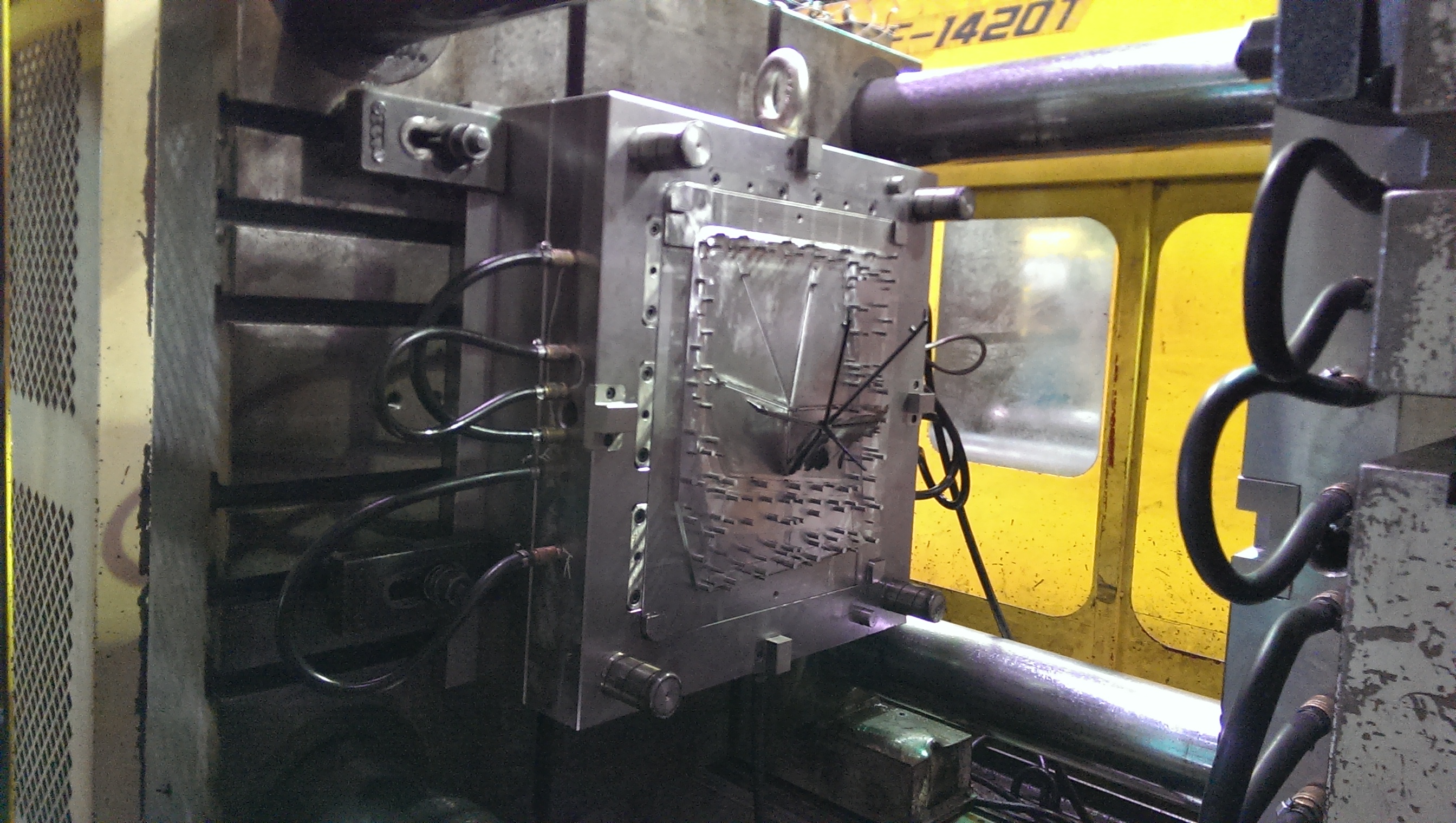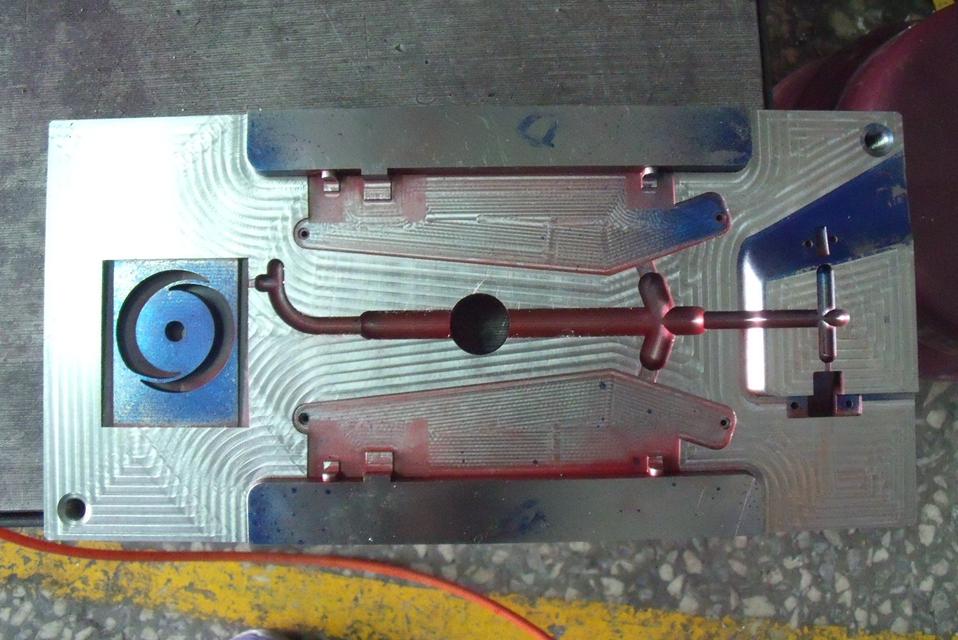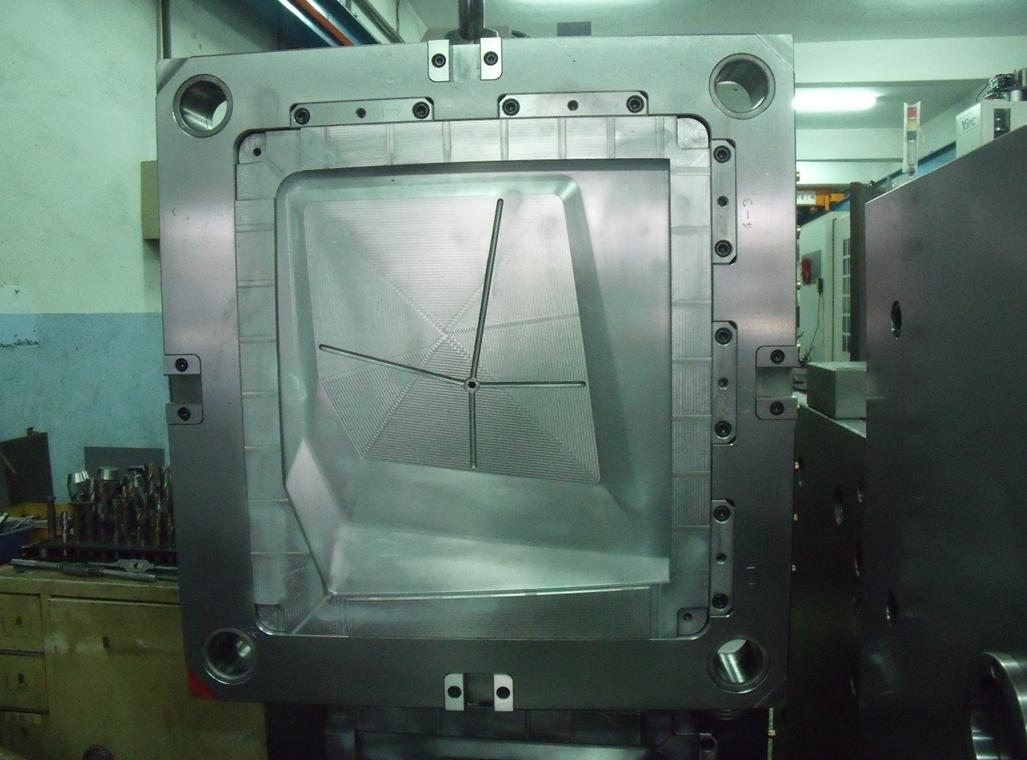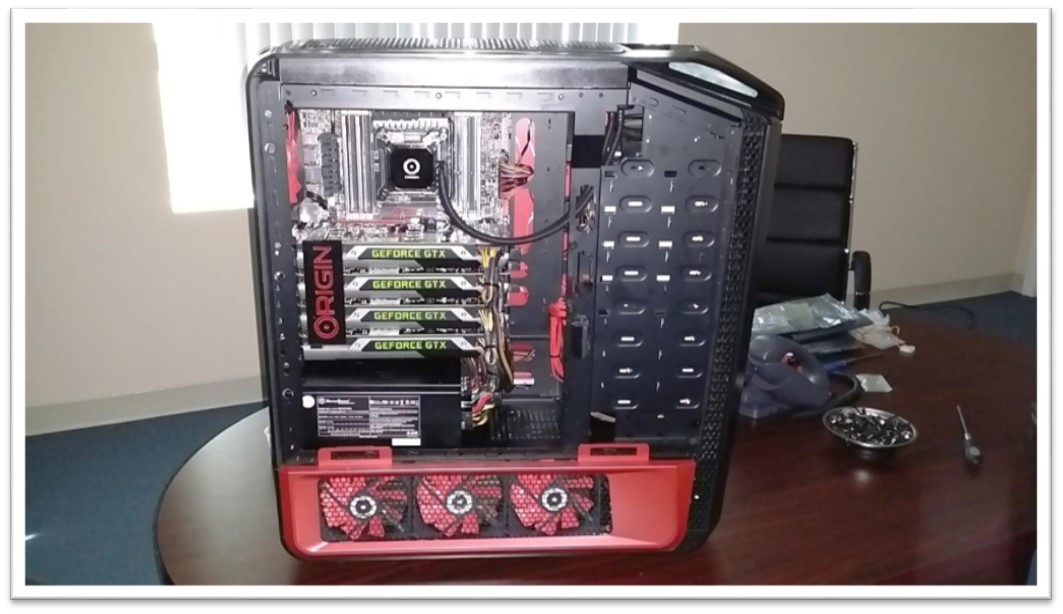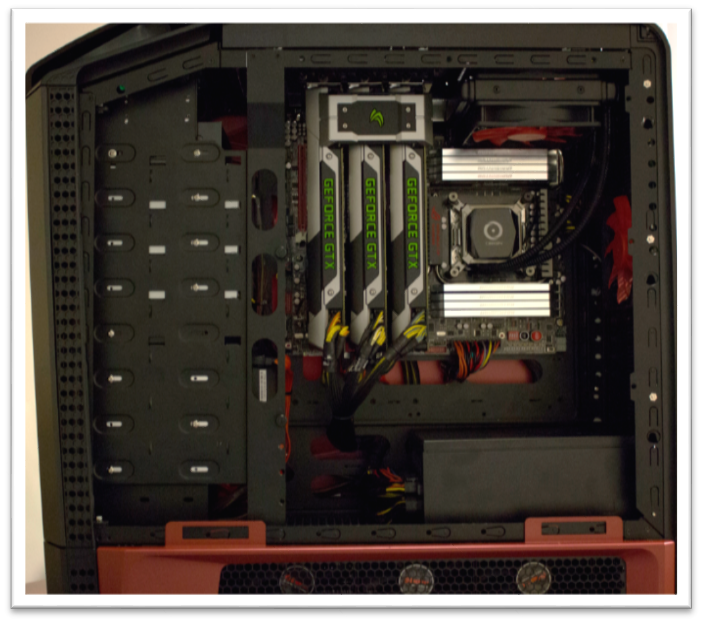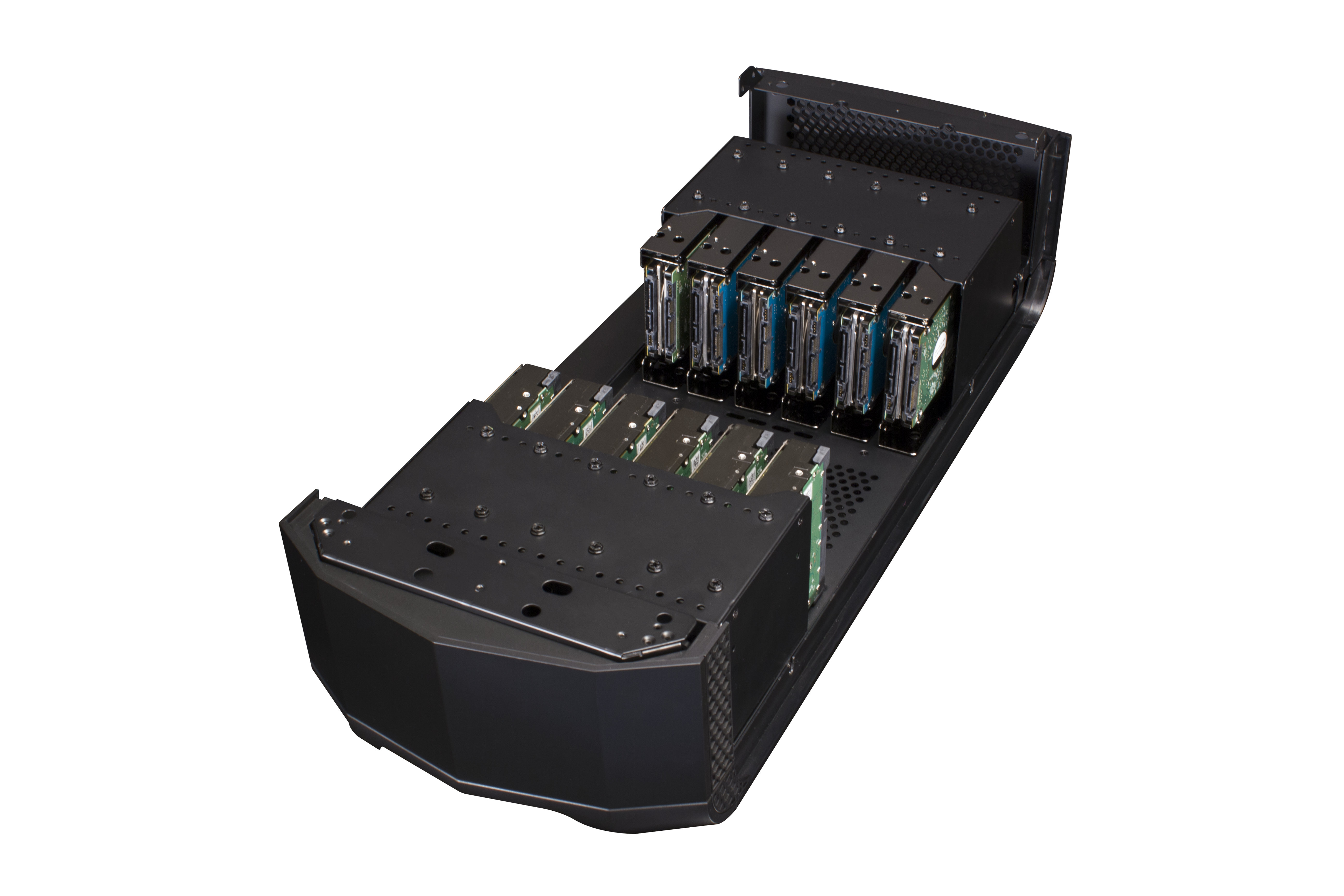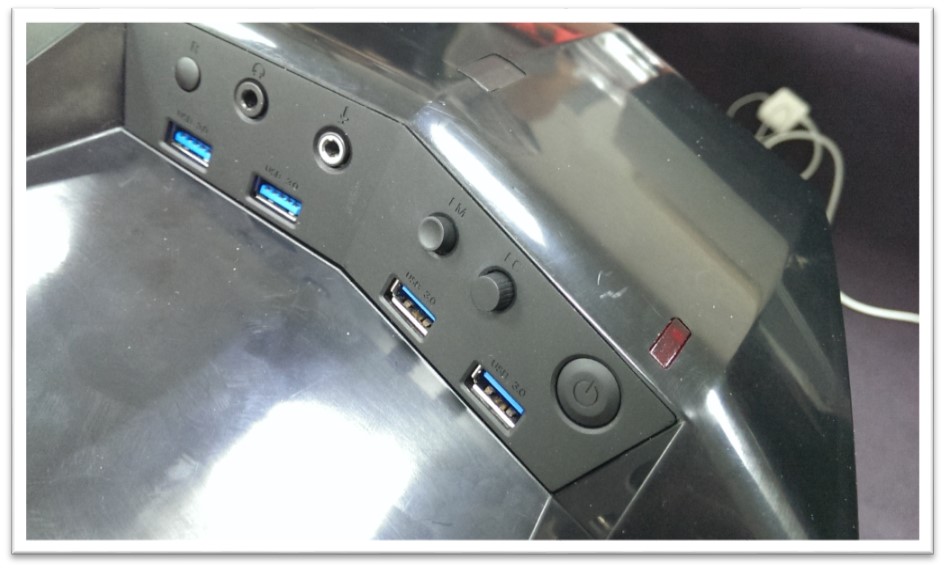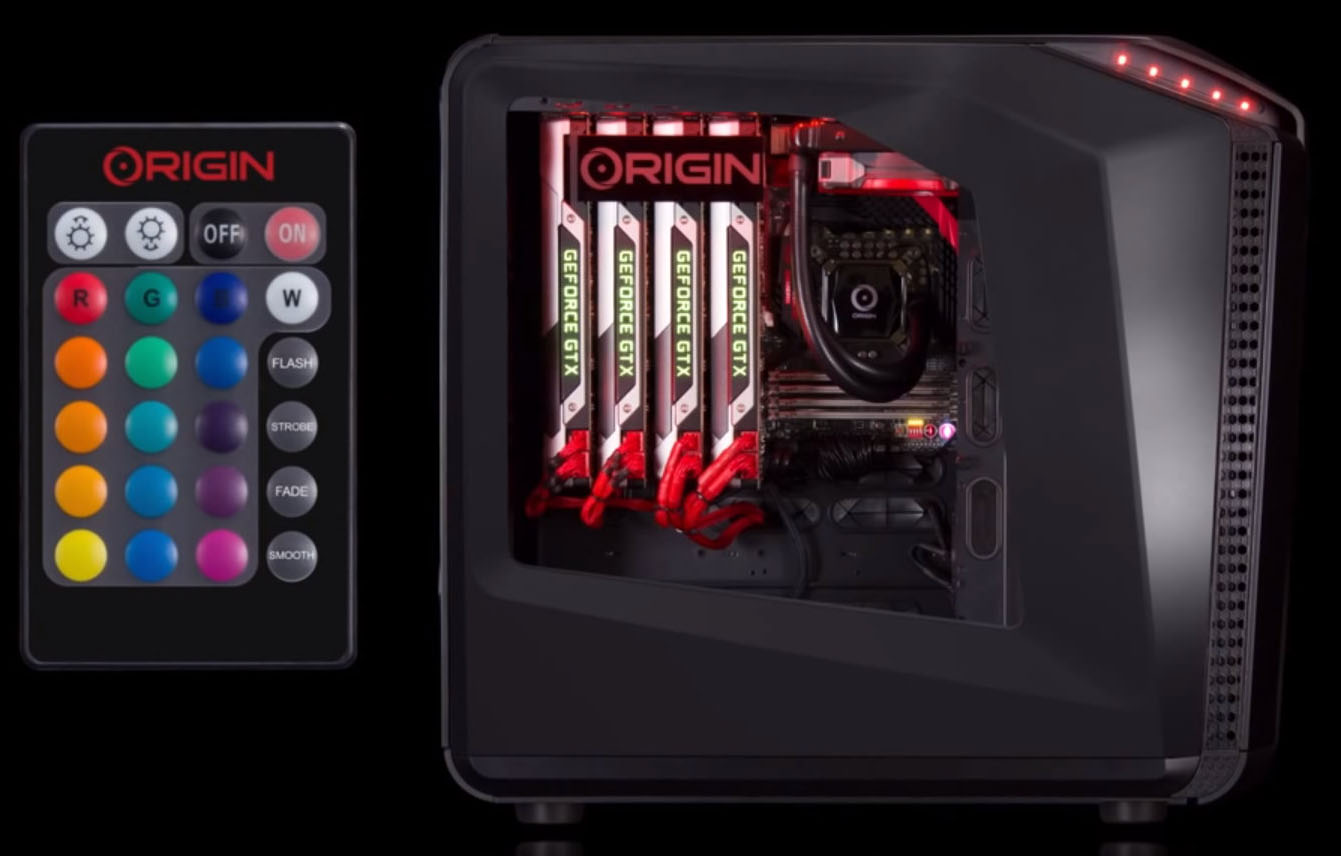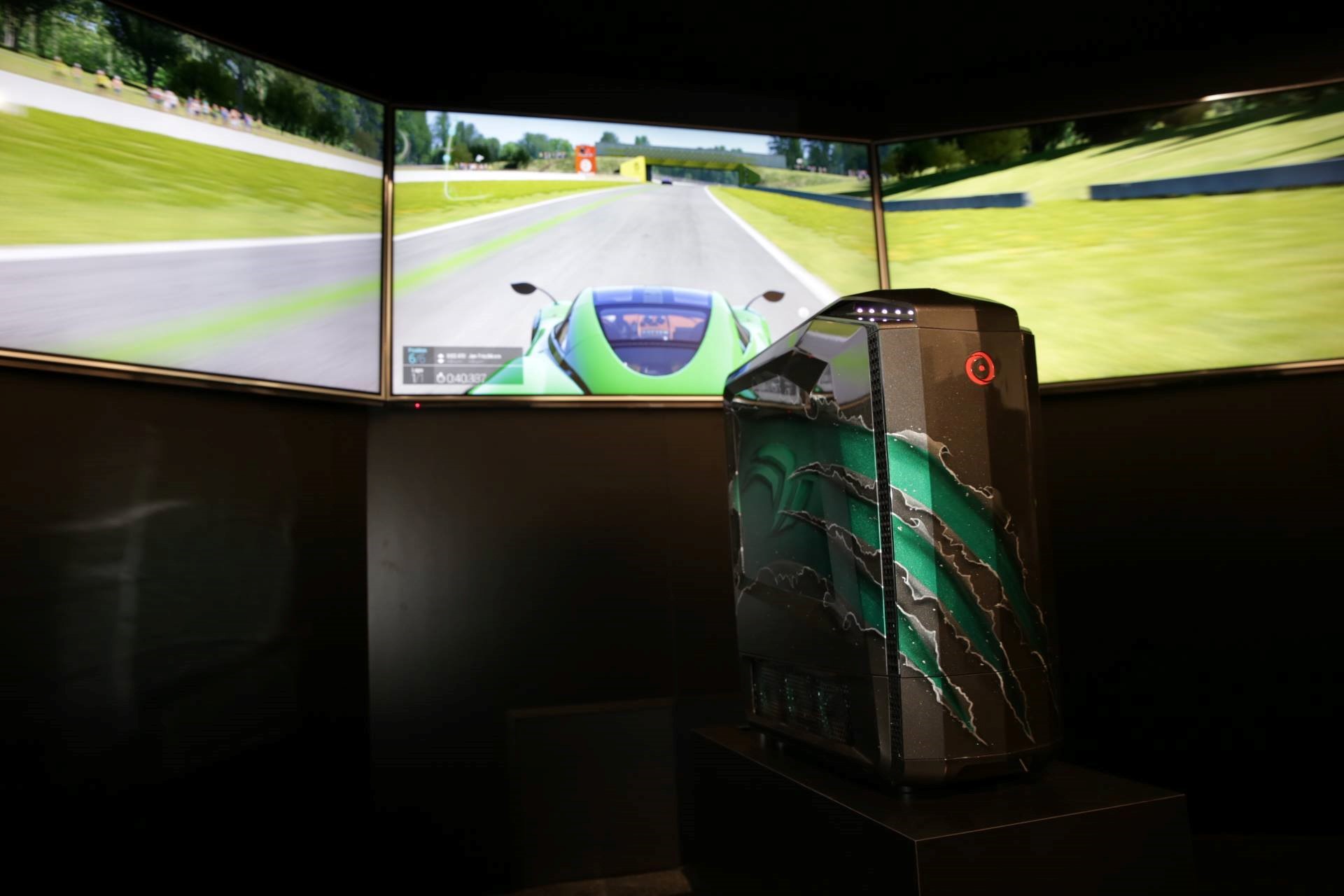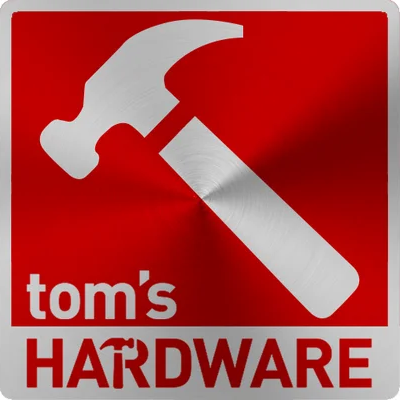Origin PC Shows Us How To Build A Case With Project Prime
The Rubber Meets The Road
November to December 2013: Metal cutting, bending, punching, stamping, injection molding, and surface treatment coating (along with CNC machining) were involved in Prime’s fabrication process.
Manufacturing The Pieces
This is the mold for the front door logo, the upper side lenses, the hard drive LED, and the IR cover.
More Molds For Project Prime
And this is the left door cavity.
This Is The Config You're Used To...
In the past, enthusiasts had to choose a different chassis depending on their motherboard orientation needs (Ed.: Typically, this has to do with graphics card or CPU cooling requirements; windowed display considerations come into play, too). One of the goals of Project Prime was to allow multiple motherboard orientations in one chassis, without the need for modification.
This picture shows a standard ATX motherboard in the Genesis full-tower.
...And This Is The Same Hardware, Flipped And Rotated
And here’s the same enclosure with a 90-degree (vertical) orientation, inverted so that the motherboard tray is on the other side of the case. If your system sits on the right side of your desk, and you really want to show off your three-way GeForce GTX 780 Ti array, this is the way you’d do that.
Adding Capacity For Cooling Or Storage
This is a shot of the bottom of the Prime chassis, which allows the Millennium to turn into the Genesis. It’s able to house two radiators or additional hard drives, depending on what you need. In this picture, Origin PC has the base loaded up with 12 3.5" disks.
Get Tom's Hardware's best news and in-depth reviews, straight to your inbox.
Accessible From Either Side
Matching the invertible motherboard tray, Prime’s front panel is equipped with dual hinges to swing to the left or the right.
Top-Accessible I/O
Prime’s I/O panel sports a fan controller that either uses the motherboard or bypasses it to dictate fan speed. It also includes audio I/O, four USB 3.0 ports, and a power button.
Remote-Controlled Lighting
Origin PC includes a remote with its Genesis- and Millennium-based builds that controls lighting and effects, giving you an extra degree of customization.
From Cardboard To CES 2014 Showcase
Ed.: A scramble ahead of CES paid off; the Origin PC team was able to show off its Genesis and Millennium in its own suite and on the show floor. Here, you see a custom-painted configuration driving three Ultra HD screens in Nvidia's booth, yielding a Surround resolution of 11,520x2160. Naturally, pushing more than 24 million pixels requires some serious graphics hardware.
It's easy for us as enthusiasts to dismiss a new case, or a mouse, or a power supply when new CPUs and graphics cards are so much more complex. However, today's walk through Origin PC's Genesis and Millennium cases demonstrate how much time and effort can go into something like a well thought-out enclosure.
A special thanks to Kevin Wasielewski, CEO and co-founder, Richard Cary, president, Jorge Percival, technical marketing manager, and the rest of Origin PC's team for giving us this behind-the-scenes look at how Project Prime came to be. If you'd like to try configuring your own Genesis or Millennium system (or even the small form factor Chronos), check out the company's PC Gaming Desktop landing page.
Tom's Hardware is the leading destination for hardcore computer enthusiasts. We cover everything from processors to 3D printers, single-board computers, SSDs and high-end gaming rigs, empowering readers to make the most of the tech they love, keep up on the latest developments and buy the right gear. Our staff has more than 100 years of combined experience covering news, solving tech problems and reviewing components and systems.
-
MxMatrix Awesome, nice view of the development process ... Looks like Origin is dethowning Alienware slowly on design cases.Reply -
user 18 This does feel similar to the Tiki article, although the Tiki was focused on the entire system and the interplay of its components in a small space, while this is focused on just a flexible case. I was hoping for a more in-depth look, and not a picture story either.Reply -
cangelini ReplyOh look, an advertisement--I mean article--for a sponsor.
Origin came to us wanting to talk about the company's new case, and I came up with an educational angle relating to case development. Our editorial team is separate from the ad guys.But didn't you guys cover a similar process for the Tikki?
We did something different with the Tiki. In fact, the interest in that piece was what got me thinking about ways to do this one--I wanted it to be different. -
Bondfc11 What an ugly, ugly BORING case. Wow so impressive - another rectangle with some hard edges. Nothing to see here folks, keep moving . . .Reply -
Jeffrey H ReplyWhat an ugly, ugly BORING case. Wow so impressive - another rectangle with some hard edges. Nothing to see here folks, keep moving . . .
Well look at it this way, I have a Case that is simple, and not some "Eyesore" that some of these cases are made, the fact is good I have a CPU that currently is both Powerful, but also both Energy Efficient and Quiet too which makes it worth it, some of these Cases I see probably do little to Isolate Noise. -
ticho66 These type cases remind me of the last big ugly gas guzzling American cars. You know the "battleships" with some fins or an odd rounded edge. The death rattle of the American car makers' arrogance. These cases are the same thing. A few angles and areo-dynamic flair on a dying paradigm.Reply -
Emanuel Elmo and yet all i want is the case. Who cares about the hype when you can not just purchase the case.I don't want to buy a full blown pc from them to get the case. The case is what is important.Reply -
clonazepam ReplyAwesome, nice view of the development process ... Looks like Origin is dethowning Alienware slowly on design cases.
It's just my opinion of course, but Alienware has always had awful looking cases. -
rRansom ReplyWhat an ugly, ugly BORING case. Wow so impressive - another rectangle with some hard edges. Nothing to see here folks, keep moving . . .
Not sure if trolling or...But really, it's not that bad of a case. Just imagine the possiblity of it having four different orientations, without having to do some major hardware modifications to make it happen . Like Emanuel Elmo, I'm also interested in getting just the case. The only time the case would not make sense was if you wouldn't be filling her up to the bring. Then again, I'd probably go with a CaseLabs STH10. :)
